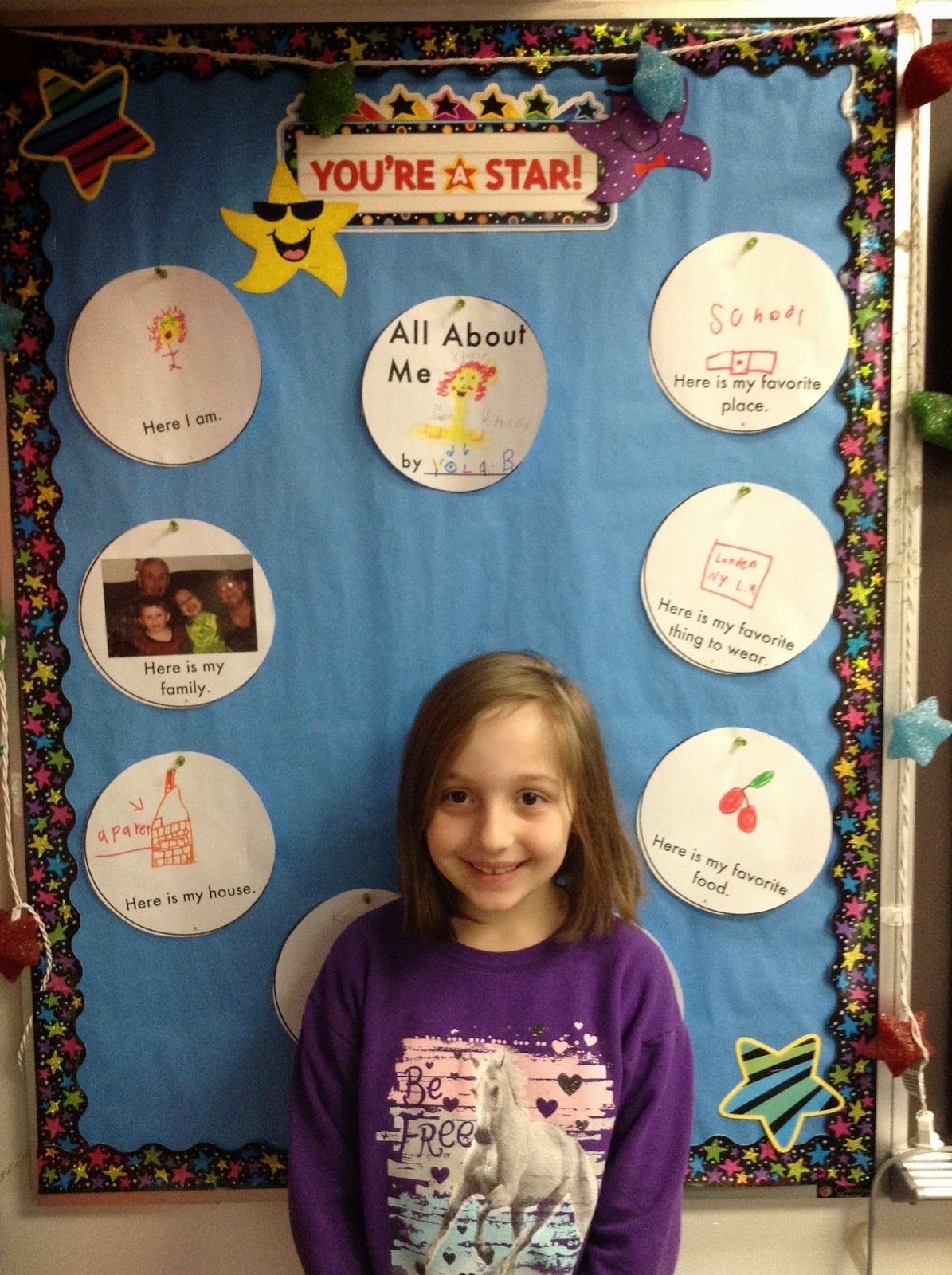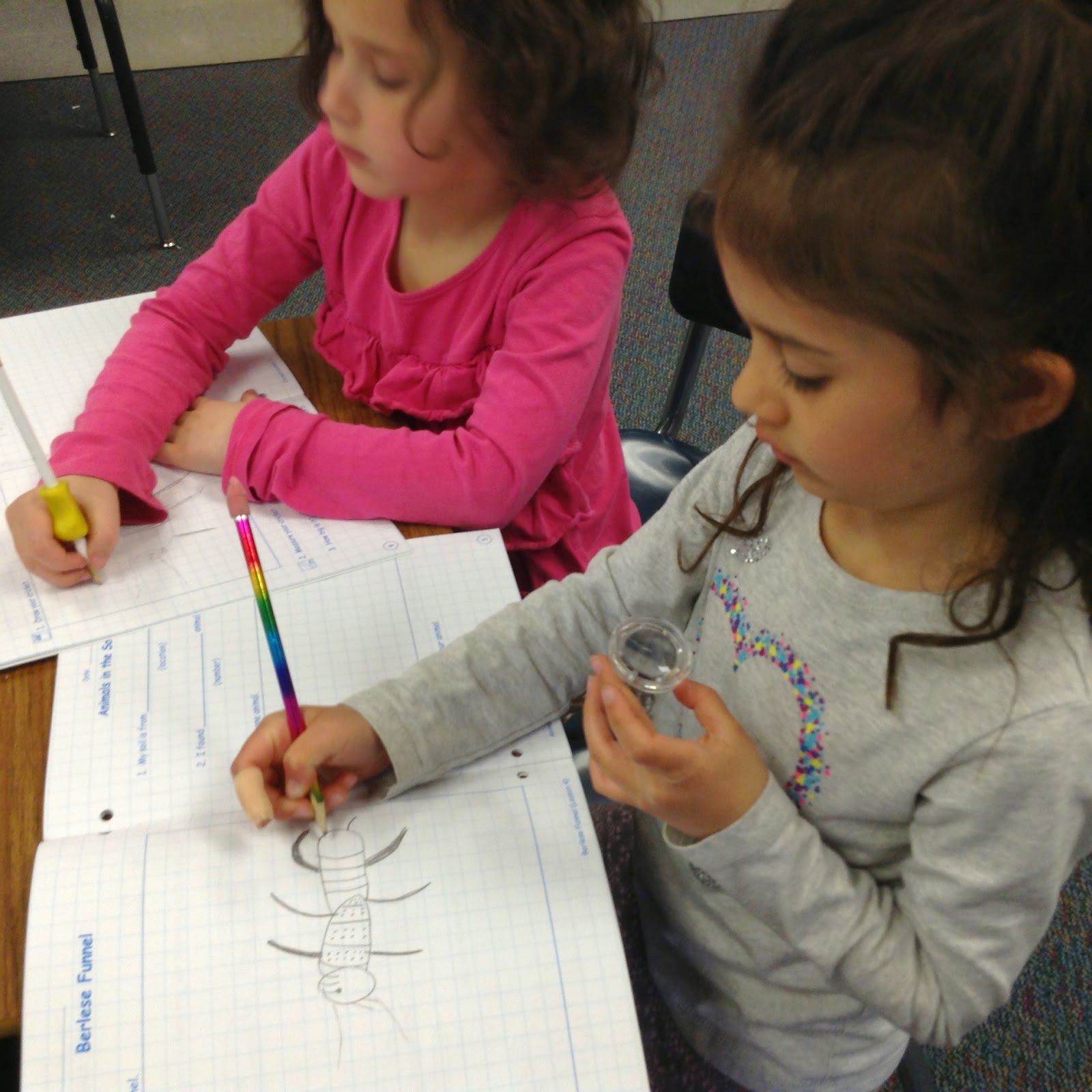Hello 1-1 Families! Enjoy reading about our last two weeks. As you can see, we have been very busy!
Literacy
Two weeks ago, our close reading lessons focused on the books, Memoirs of a Goldfish and Diary of a Fly. While reading Memoirs of a Goldfish, the students practiced the skill of cause and effect. Later that week, we read Diary of a Fly. Once the students read both close reading books, we were able to compare and contrast the main characters as well as the books themselves. The students were able to identify that both books were written in the form of a diary.
Last week, the children worked on identifying Realism and Fantasy in texts. They learned that realism means real and fantasy means fake. We read the book, Plantzilla. The children identified both realism and fantasy elements in the text. They recorded their evidence on sticky notes as we were reading and placed them on our Realism Fantasy chart. On Tuesday, the children worked together to read the article, Lots of Lemurs. As they were reading, the children recorded the main idea and supporting details of the article on a graphic organizer.
Writing
In writing, the children continued their Expository Writing unit. They chose an animal that they were interested in learning about. Using Pebblego.com and Facts4Me.com, the children researched their chosen animal. They were looking for facts in four categories: Description, Habitat, Food, and Interesting Facts. They worked on recording their facts short hand. They will use these facts to write a nonfiction book on their animal.


On A Rainy Day...
Last week, the children wrote a piece about their favorite thing to do on a rainy day. After, they decorated an umbrella and stapled their writing to it, complete with a pair of matching rain boots. We hung their rainy day writing from the ceiling in our room. They turned out very cute!

Earth Day
In preparation for Earth Day, the children listened to the story, Earth Day Hooray. After, they brainstormed different ways that they can heal our Earth. The children then wrote their own piece about a way they can heal the Earth. They created an Earth out of construction paper and glued their writing piece inside!

The children also wrote an acrostic poem using the words, Earth Day. Together they brainstormed different words and phrases to go with each letter. They chose their favorite word/phrase for each letter and created their acrostic poem. They completed the activity with a photo of themselves holding an earth.
Math
In Math, we’ve been hard at work on unit 8. The children continue working with counting combinations of coins and showing amounts of money with the fewest number of coins. They were introduced to the dollar. The children played One-Dollar Exchange, they practiced exchanging different coins for one of an equivalent value, until they reached a dollar. The children worked with place value: hundreds, ten, and ones. They used base-10 blocks to show whole numbers. They also, read and wrote whole numbers shown with base-10 blocks. The children made up, solved, and recorded money number stories. They worked with using different strategies to add and subtract the 2-digit numbers presented in the money stories. The children recorded number sentences to match their solution strategies. They also worked with making change by counting up.
Science
The scientists have been working hard on their Collecting and Examining Life Unit. Look at all the great lessons they have been engaged in recently!
The scientists went to work on comparing animals and plants. They made 2 different collages, one of plants and one for animals. Then, they discussed the characteristics of plants and animals. We ended the lesson by creating a venn diagram on animals and plants, we talked about how they are different and how they are the same.


The scientists were very excited to study Gold Fish. They began by focusing on how we breathe, they noted how our chest rises and falls and what parts of our body we use to breathe. The scientists then studied a diagram of a Fish and discussed the different body parts. After learning all the body parts, the scientists took turns coming up to the board and labeling the body parts on a picture of a Fish. Then, the scientists worked with their table group to observe their very own Gold Fish. Using a magnifying glass and ruler, the scientists recorded information about their fish. They worked very hard and drew descriptive diagrams, making sure to label the parts of their fish. All the scientists wrote down additional notes on what they learned from observing their fish. The scientists had a great discussion at the end on how the fish, crickets, and brine shrimp are similar. They talked about how each of these animals breathe.
The scientists enjoyed a lesson on seed dispersal. They learned that seed dispersal is the way that a seed travels away from the parent plant. The scientists watched a short video showing the three ways that seeds are dispersed: by animals, wind, and water. After they worked together to complete a seed sort where they had to move different seeds into the correct seed dispersal category.
They also worked with identifying three plant parts: the stem, leaf, and fruit. They worked in small groups to dissect three plants: an apple, corn, and green bean. They observed the fruit and discussed what the stem, fruit, and seeds looked like. They chose one to observe further and wrote about it in their science journal.


The scientists examined roots. They explored the structure and function of roots. Each scientist had their own seedling, they observed it using a magnifying glass and identified the roots and root hairs. Then they compared the weight of plant parts that grow above the ground to those that grow below the ground. They recorded their observations and findings in their science journal.
The scientists continued their study of seeds, they observed and dissected a Lima bean seed to see what was inside. Then they prepared the Lima bean and some corn seeds to try and sprout in a moist paper towel. Over the next week, the scientists will observe and monitor the growth of the sprouts.
Star Students
Yola was our star student 2 weeks ago. Thanks Yola for sharing all about you!
Charice was our star student last week. Thanks Charice for sharing all about you!
Royal Reader
A special thank you to Yola’s Mom, she joined us last week as our Royal Reader. The children enjoyed listening to the two stories that Mrs. Braho read, What Do Angels Wear? and Without You.
Happy Birthday
We celebrated 3 birthdays recently. Happy Birthday to Alex, Yola, and Charice! We hope that you had a wonderful time on your birthday!









































